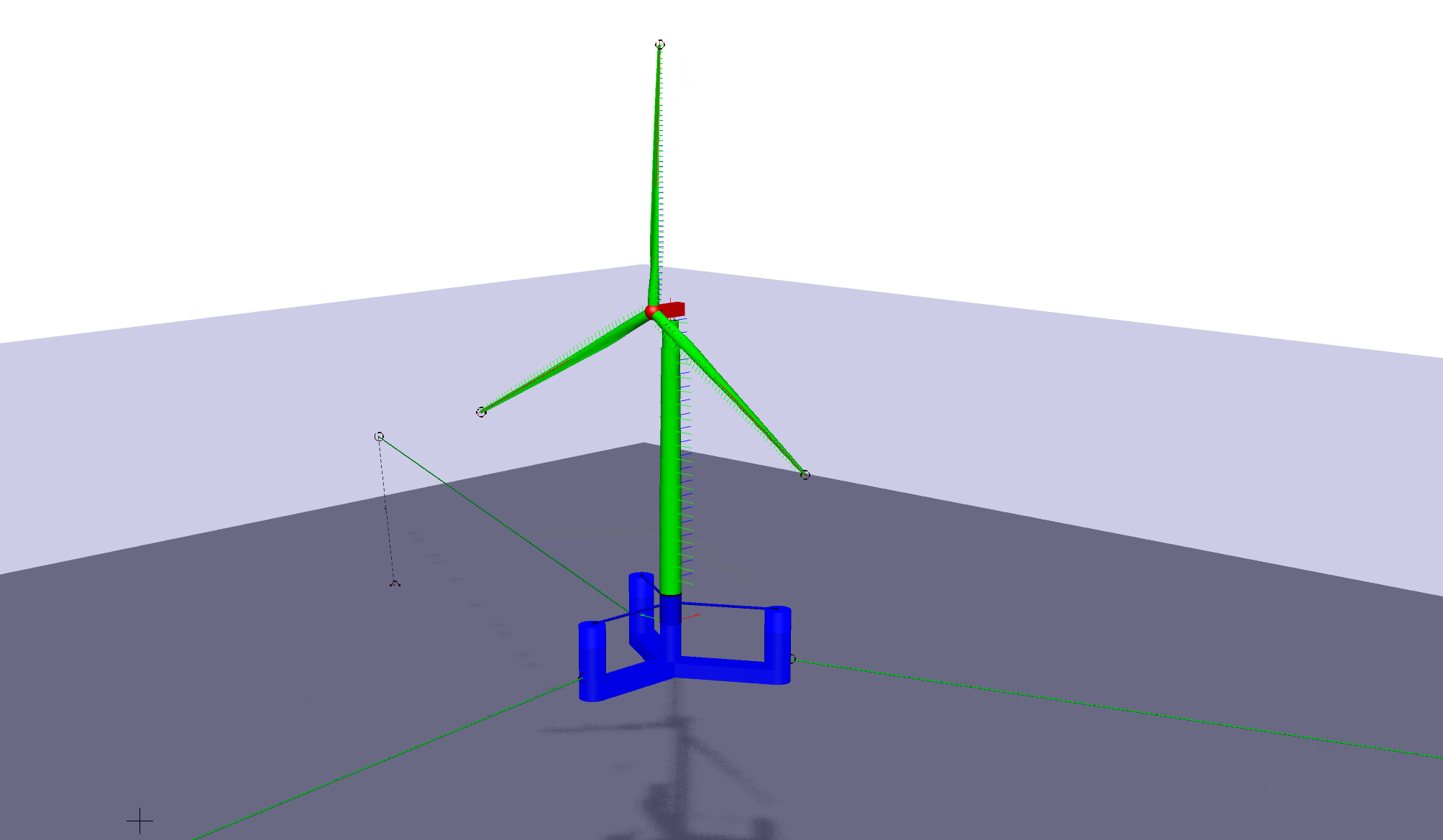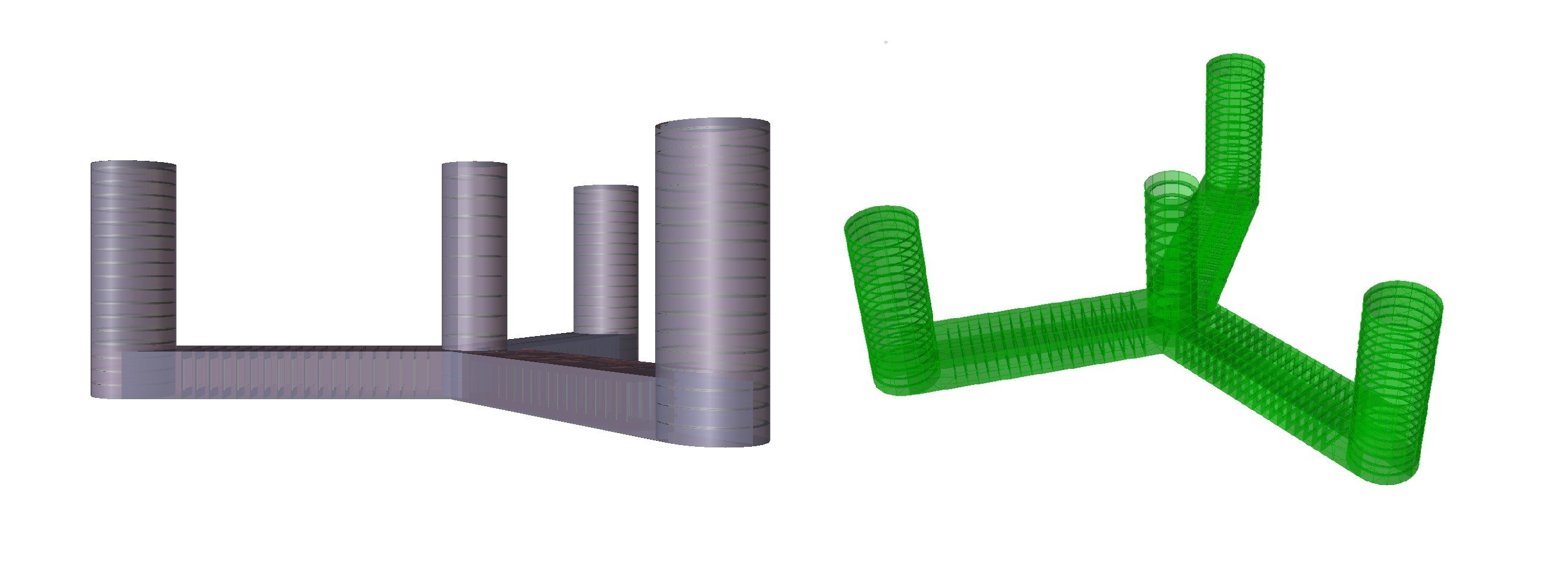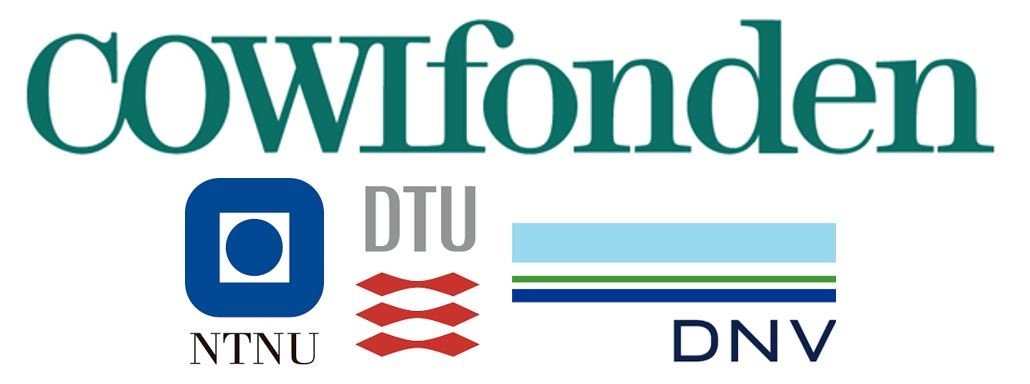Strong partnership to improve floating offshore wind design
23.11.2021
Offshore wind, one of the fastest growing energy markets globally, is rapidly maturing into its next phase – floating offshore wind (FOW).
The fast growth of the FOW industry has created a need for highly specific and efficient methodologies, to support the economical design of floating substructures (floaters).
In 2020, COWIfonden granted a DKK 3.25 million donation to an innovative research project, to develop a more efficient methodology for floater design. COWI has partnered with the Norwegian University of Science and Technology (NTNU), the Technical University of Denmark (DTU) and classification society DNV, to develop such a methodology. The project is known as EMULF - ‘efficient numerical methods for ultra large floating wind turbines’ – and the team are determined to tackle some of the key challenges facing floater designers.
FOW turbines have already proven their technical feasibility, and full scale projects are being developed worldwide with increasing frequency and scale. However, FOW is yet to produce electricity at the Levelized Cost of Electricity (LCOE) competitive with other types of wind and renewable energy. As the turbines with floaters are much the same as those with bottom-fixed foundations, floaters have been identified as having the largest cost reduction potential.
BENEFITTING THE ENTIRE INDUSTRY
The research is already yielding positive results, and it is hoped that the EMULF methodology will be widely distributed and used, bringing value to the entire floating offshore wind industry. The anticipated reduced lead times for the engineering of floaters and mooring systems will benefit customers, while the project partners will be able to use the research to promote their technical competence.

Floater design is complex and computationally demanding, particularly now as the industry trends towards the development of ultra large turbines (15-20 MW). Accurately modelling the stability and dynamic responses of the floaters that accommodate these giant structures can be a real challenge with existing tools.
ADVANCING FLOATER DESIGN

The present methodologies available to floater designers have been developed based on global analysis assuming a rigid floater. Such methodologies make it difficult to analyse the stress fields for internal loads, and this difficulty is amplified for designers of large floaters which can have flexible behaviour. The EMULF project seeks to facilitate a more efficient floater design process, which includes floater flexibility and accurate stress fields. This is achieved by:
- Adding flexible floater modes to existing global response models.
- Transferring the global response to finite element models (FEM) and enabling an efficient stress analysis.
- Performing validation against existing experimental data.
In addition, to speed up the FEM stress response modelling, the team are developing a frequency-domain method, which will be benchmarked against time-domain simulations.
The purpose of the EMULF project is to develop an efficient numerical method specific to floating wind systems. More efficient tools allow for more optimised design, which will in turn reduce the cost of floater fabrication and installation. The methodology developed by EMULF is intended to be used to simulate the coupling of aerodynamic and hydrodynamic loads and responses, when designing future flexible floaters with ultra large turbines.
A UNIQUE COLLABORATION
The EMULF project is funded by COWIfonden and contributions from the partners. Erlend Gjelstad Jakobsen, Associate Project Director at COWI's Wind Energy and Renewables Department is leading the project, alongside Professor Zhen Gao from NTNU, Professor Henrik Bredmose from DTU and Tore Christiansen, Project Coordinator in DNV’s software engineering department. Each partner brings their own expertise to the table, creating a mutually beneficial supergroup of sorts.
“COWI is motivated by the opportunity to contribute with improved methodology to help designers tackle the technical challenges associated with design of FOW, especially given the positive market outlook for the industry,” says Erlend Gjelstad Jakobsen. “The resulting efficiency gains can reduce project timelines and enable design optimalization, creating value for COWI's customers,”
Tore Christiansen says “DNV’s goal is to retain its leading position as a provider of advanced tools for integrated load analysis of FOW turbines. DNV is particularly interested in developing modelling methods for large floating structures that account for dynamic behaviour without sacrificing computational efficiency. DNV is also focused on the validation of analysis results against model tests, and creating guidelines for environmental and operational conditions.”
DTU has a long track record in modelling of offshore and floating turbines. As Professor Henrik Bredmose explains, “we view EMULF as a project relevant for reducing material costs and more accurately predicting system dynamics and stress loads for coupled floater-turbine systems. DTU is contributing to EMULF with its existing HAWC2 software, used for dynamic modelling of flexible floaters. DTU will validate the HAWC2 model against data, codes and methods from the other partners, and will further develop a frequency domain based technique for rapid stress predictions.
NTNU is interested in developing numerical methods and models to assist researchers and engineers in carrying out coupled dynamic analysis of floating turbines. “A particular focus for NTNU is modelling of flexible floaters with coupled time-domain simulations, addressing both floater motion/vibration and structural stress responses,” says Professor Zhen Gao.
This unique, four way collaboration brings value to each partner, and has created a strong platform for future cooperation. NTNU and DTU are interested in developing methodology, which can then be implemented into software and guidelines from DNV, and directly used by COWI on floating wind projects. The partners have agreed to publish the results and findings of the EMULF project, and share the knowledge gained via conference presentations and workshops.

COWI, DTU, DNV and NTNU are excited to be working together on EMULF, to overcome industry-wide challenges.
Get in contact

Stian Fiskvik
Specialist, Structural
Wind Energy and Renewables, Norway
Tel:
+47 98656908
stfi@cowi.com